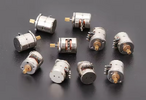finalfrontier
Well-Known Member
Roger that, I will just sit back and enjoy the show.



If you mean the hollow ones, yes - My plan is to incorporate all of those into the original model on CGTrader. I'm currently wrestling with how to put all of the files into the same package without making it confusing - there are so many alternate parts depending on how it's built - the assembly instructions are going to be crazy. I think I'll have to have multiple PDFs - one for solid, one for hollow, one for the moire assemblyWill you offer the fx working shells?
It just keeps getting better. Your STL files print beautifully on my P1S.I think I'm finally ready to call this one done! 31 unique chirp patterns, timing fixed, and some more fun stuff worked in.
View attachment 1940197
The final sound system wound up consisting of an ATtiny85 microcontroller directing a DFPlayer Mini board over a serial connection.
View attachment 1940198
The relatively simple microcontroller sketch for this setup can be snagged here: https://app.arduino.cc/sketches/34a15c65-3cf0-431c-ba50-ef761802dfaa?view-mode=preview


